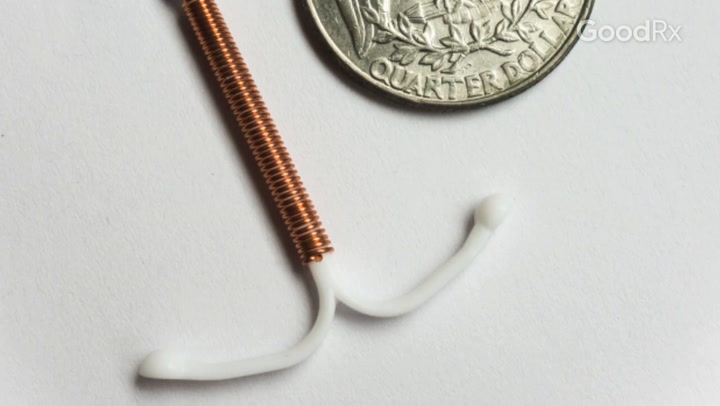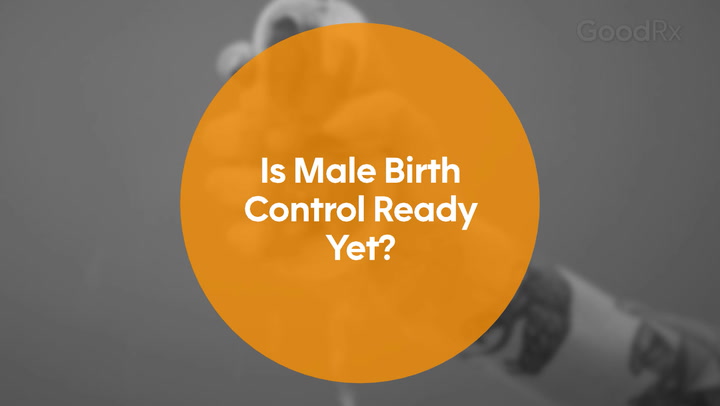
IUD Removal: Here’s What to Expect
Key takeaways:
The intrauterine device (IUD) is a long-acting, reversible contraceptive device that can be removed when it’s no longer needed or when the IUD expires, whichever comes first.
An IUD removal is a short procedure that’s usually done in a healthcare provider’s office. IUD removal may be uncomfortable for some, taking ibuprofen or acetaminophen 2 hours before removal can help limit pain.
You can get pregnant as soon as an IUD is removed, so if that’s not the plan, then you’ll need to start another form of birth control.

An intrauterine device (IUD) is an effective birth control method called a long-acting reversible contraception (LARC). Many people enjoy the freedom it gives them from remembering to take a pill every day. But IUDs don’t last forever, and they need to be replaced when they expire. There are other reasons why someone would want, or need, an IUD removed before the expiration date.
IUD removal is a quick procedure, and knowing what to expect and how to prepare for an IUD removal can make the process smoother.
When should I get my IUD removed?
One of the best things about an IUD is that it lasts for a long time. But there are many reasons why you may want or need to have an IUD removed, like:
IUD expiration (between 3 and 10 years, depending on the brand — more on this below)
Menstrual changes, such as changes in flow, regularity, and cramping
Side effects of levonorgestrel-releasing IUDs like headaches, nausea, breast tenderness, and mood changes
Desire to become pregnant
The IUD moving out of place
Pelvic inflammatory disease (PID) that isn’t getting better with antibiotics
Pregnancy
A new medical concern like certain cancers, liver disease, heart disease, or lupus
A new allergy to an ingredient in the IUD
Search and compare options
Also, you can choose to have your IUD removed at any time, based on your own preferences.
How long does an IUD last?
IUDs last for 3 to 10 years, depending on the brand. There are five brands of IUDs that are FDA-approved.
The levonorgestrel-releasing IUDs are meant to last 3 to 8 years, depending on the brand, while the copper IUD can last up to 12 years. Here’s how long IUD lasts based on brand:
Mirena: Up to 8 years
Paragard: Up to 12 years
Liletta: Up to 8 years
Kyleena: Up to 5 years
Skyla: Up to 3 years
IUDs have expiration dates because the FDA approves them only for certain lengths of time. Beyond the expiration date, there’s no guarantee that the IUD will work to prevent pregnancy. There’s also a risk for infection if an IUD is left in for too long after its expiration date.
Do you need to have your IUD removed immediately once it expires?
Not really. It’s a good idea to get an IUD removed once it has expired and, if needed, replaced by its expiration date.
But don’t worry if you go a little over: Studies show that levonorgestrel-releasing and copper IUDs may remain effective for at least 1 year past the expiration date. There’s no guarantee that expired IUDs will prevent pregnancy, so it’s a good idea to get it removed and replaced as soon as possible if you don’t want to get pregnant.
Going too far past an expiration date also increases your risk for developing an infection. These infections can be very serious and affect your health. They can also lead to difficulty getting pregnant, even if you get treatment for the infection.
How to prepare for an IUD removal
Getting an IUD removed is usually shorter and less painful than having it inserted. An IUD can be removed at any point during the menstrual cycle. Unlike insertion, it doesn’t have to be timed against your period. That said, there are a few things you need to know to prepare for the removal of your IUD:
Avoid sex for at least 7 days before the removal to make sure you’re not pregnant.
Take a dose of ibuprofen or acetaminophen about 2 hours before your removal.
Think about whether you want to continue with birth control after your IUD removal. This may be a new IUD insertion, a different form of birth control, or nothing at all, if your personal circumstances have changed. Remember that it’s possible to get pregnant as soon as the IUD is removed.
How is an IUD removed?
A doctor or nurse removes the IUD in their office, and it only takes a few minutes. You’ll lie down in the same position you used for the IUD insertion, and then your healthcare provider will:
Look for your IUD strings.
Grasp the strings using a medical instrument called forceps.
Gently and steadily pull on the strings, which gets the IUD out.
Check the IUD to make sure it’s been removed in one piece.
When it comes to removing an IUD, sometimes there are no IUD strings to pull on. That makes the process a little more complicated. This usually means the IUD has shifted.
In these cases, you’ll need an ultrasound scan and a pregnancy test to look for the IUD and check for pregnancy. If the IUD is still present, but it’s hard to reach, then you’ll need another procedure with a specialist to remove the IUD.
Does IUD removal hurt?
IUD removal can be uncomfortable, especially if your IUD has moved or shifted. But the good news is that most people don’t experience much discomfort during an IUD removal. Afterwards, you might feel some cramping as your body adjusts. But taking a dose of acetaminophen or ibuprofen 2 hours beforehand can help you avoid this cramping.
Can I remove my own IUD at home?
It depends.
Healthcare providers have guidance on how to safely remove an IUD at home, including what equipment to use, and when to seek professional help. You should only try to remove the IUD by yourself at home if you can see or feel the IUD strings. The success rate for self-removal is 20%, meaning that 80% ultimately end up needing to see a healthcare provider for their IUD removal.
IUD self removal is quite popular. In fact, one study showed that 59% of people have tried to remove an IUD at home. Some people prefer to remove their own IUD. Others opt for self removal because it’s too difficult to get to a healthcare provider or because they don’t have insurance.
What should you expect after IUD removal?
Light bleeding and cramping are normal after IUD removal, but those symptoms shouldn’t last very long.
Once the IUD is removed, menstruation will go back to the way it was before IUD insertion, but this can take up to several months.
Are there any IUD removal side effects?
Some people with levonorgestrel-releasing IUDs report a wide range of symptoms after removal, including:
Weight gain
Mood changes
Anxiety
Fatigue
Headaches
This is often referred to as the “Mirena crash” — but it has been reported with all brands of hormone releasing IUDs. There are no studies about this phenomenon, but symptoms should resolve over time as your hormone levels return to normal.
How long after IUD removal can you get pregnant?
Fertility goes back to normal as soon as the IUD is removed. So you can get pregnant the next time you ovulate after your IUD removal. For some people that can be as little as a few days or a week. For others it might be a few weeks.
Since an IUD removal isn’t timed against your period, you might not know exactly when your next ovulation window starts. If you’re tracking your ovulation window, keep in mind that you can get pregnant as soon as the next window opens.
If you’re not planning on getting pregnant, talk with your healthcare provider about starting another birth control method as soon as your IUD is removed.
What are signs you should seek urgent medical care after IUD removal?
After IUD removal, problems — like infection — can happen, but they’re uncommon. You should contact your healthcare provider if you experience any of the following after IUD removal:
Fever
Heavier than usual vaginal bleeding
Foul smelling vaginal discharge
Severe pain that’s not relieved by over-the-counter pain medications
Painful intercourse
The bottom line
Getting an IUD removed is usually a straightforward and relatively painless procedure with little preparation needed. It’s best to have an IUD removed by a healthcare professional in case there are any issues. IUD removal can be done at any time, but fertility returns to normal immediately, so it’s important to pick out an alternative birth control method if you need one.
Why trust our experts?


References
American College of Obstetricians and Gynecologists. (2017). Long-acting reversible contraception: Implants and intrauterine devices.
American College of Obstetricians and Gynecologists. (n.d.). Complicated IUD removal.
American College of Obstetricians and Gynecologists. (n.d.). LARC removal.
Amico, J. R., et al. (2018). Taking the provider "out of the loop:" Patients' and physicians' perspectives about IUD self-removal. Contraception.
Amico, J. R., et al. (2020). "$231 … to pull a string!!!" American IUD users' reasons for IUD self-removal: An analysis of internet forums. Contraception.
Andersson, K., et al. (1994). Levonorgestrel-releasing and copper-releasing (Nova T) IUDs during five years of use: A randomized comparative trial. Contraception.
Centers for Disease Control and Prevention. (2013). U.S. selected practice recommendations for contraceptive use, 2013. Morbidity and Mortality Weekly Report.
Centers for Disease Control and Prevention. (2023). Classifications for intrauterine devices.
Forsythe, A., et al. (2019). Copper intrauterine device (IUD). Oxford University Hospitals.
Foster, D. G., et al. (2014). Interest in and experience with IUD self-removal. Contraception.
Lanzola, E. L., et al. (2023). Intrauterine device. StatPearls.
McNicholas, C., et al. (2015). Use of the etonogestrel implant and levonorgestrel intrauterine device beyond the U.S. Food and Drug Administration-approved duration. Obstetrics and Gynecology.
McNicholas, C., et al. (2017). Prolonged use of the etonogestrel implant and levonorgestrel intrauterine device: 2 years beyond Food and Drug Administration-approved duration. American Journal of Obstetrics and Gynecology.
National Women’s Health Network. (2016). My doctor won’t remove my IUD.
Planned Parenthood. (n.d.). How does IUD removal work?
Planned Parenthood. (n.d.). IUD.
Planned Parenthood. (n.d.). What are the side effects of IUDs?
Winner, B., et al. (2012). Effectiveness of long-acting reversible contraception. The New England Journal of Medicine.
Wu, J. P., et al. (2014). Extended use of the intrauterine device: A literature review and recommendations for clinical practice. Contraception.

























